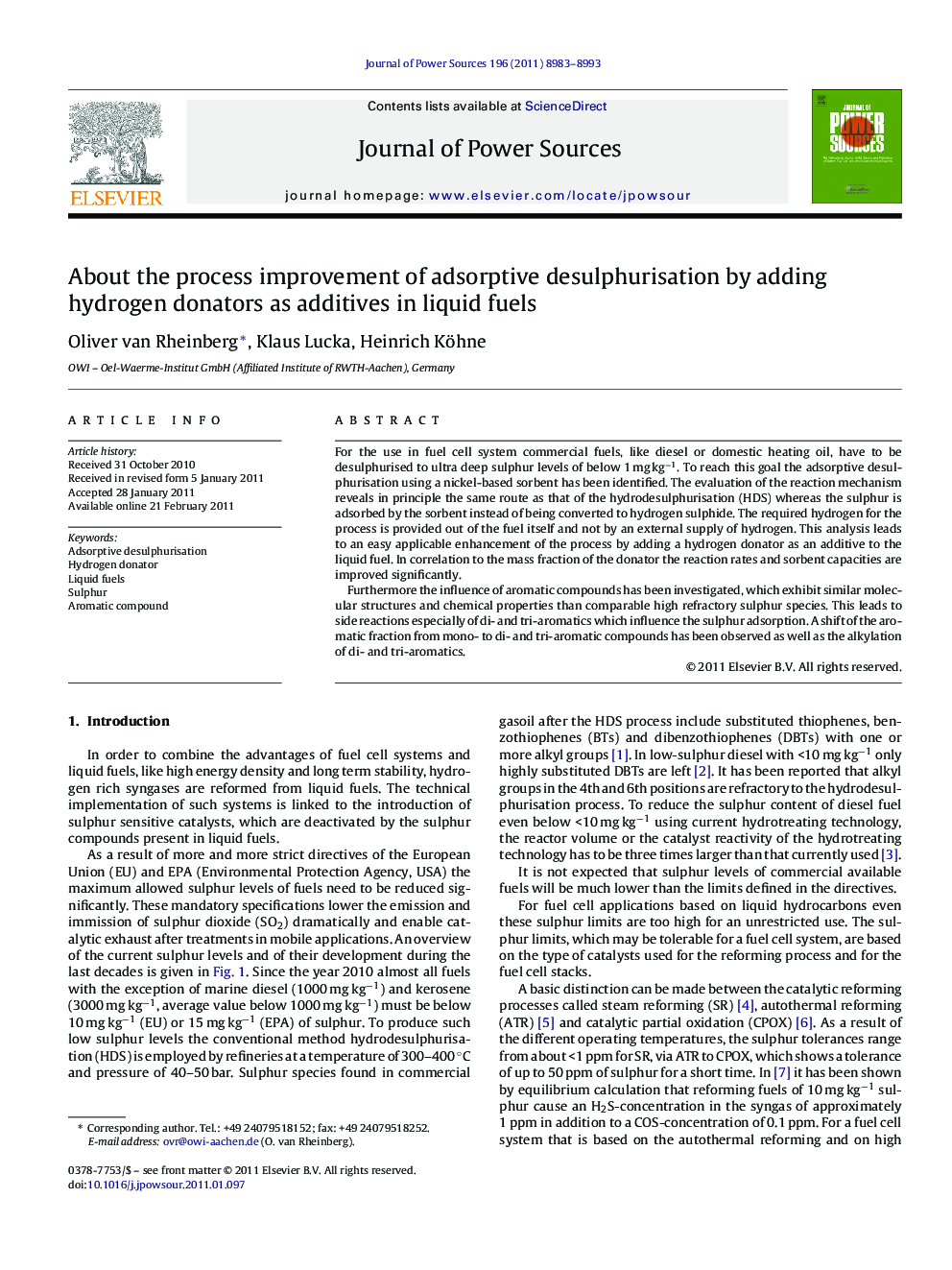| Article ID | Journal | Published Year | Pages | File Type |
|---|---|---|---|---|
| 1293299 | Journal of Power Sources | 2011 | 11 Pages |
For the use in fuel cell system commercial fuels, like diesel or domestic heating oil, have to be desulphurised to ultra deep sulphur levels of below 1 mg kg−1. To reach this goal the adsorptive desulphurisation using a nickel-based sorbent has been identified. The evaluation of the reaction mechanism reveals in principle the same route as that of the hydrodesulphurisation (HDS) whereas the sulphur is adsorbed by the sorbent instead of being converted to hydrogen sulphide. The required hydrogen for the process is provided out of the fuel itself and not by an external supply of hydrogen. This analysis leads to an easy applicable enhancement of the process by adding a hydrogen donator as an additive to the liquid fuel. In correlation to the mass fraction of the donator the reaction rates and sorbent capacities are improved significantly.Furthermore the influence of aromatic compounds has been investigated, which exhibit similar molecular structures and chemical properties than comparable high refractory sulphur species. This leads to side reactions especially of di- and tri-aromatics which influence the sulphur adsorption. A shift of the aromatic fraction from mono- to di- and tri-aromatic compounds has been observed as well as the alkylation of di- and tri-aromatics.
